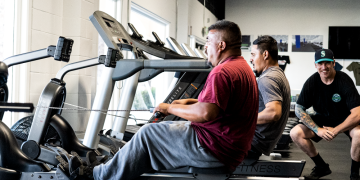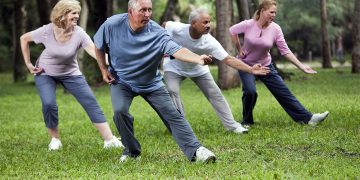Introduction
Cardiovascular exercise—or simply “cardio”—is a fundamental part of a healthy lifestyle. Whether it’s running, cycling, swimming, or brisk walking, cardio improves heart health, enhances endurance, boosts mood, and helps manage weight. Because of its many benefits, some people focus almost exclusively on cardio in their fitness routines, often overlooking strength or resistance training.
But what happens when cardio becomes the only type of exercise you do, especially over the long term? One of the most important concerns is its potential impact on muscle mass and muscle growth. This article explores how prolonged cardio-only training affects muscle development, what mechanisms are at play, and how to strike a better balance for overall fitness and body composition.
What Is Cardio and Why Do People Rely on It So Heavily?
Cardio refers to any rhythmic, continuous activity that raises your heart rate and breathing rate for an extended period. Common forms include:
- Running or jogging
- Cycling
- Swimming
- Rowing
- Elliptical training
- Jumping rope
- Group aerobic classes
Many people are drawn to cardio for its efficiency in burning calories, improving cardiovascular health, and promoting fat loss. For individuals with weight loss goals, it often becomes the dominant (or only) form of exercise in their routines.
While cardio has undeniable health benefits, long-term reliance on cardio without resistance training may work against your muscle-building goals.
Does Cardio Build Muscle?
The short answer is: not significantly. Cardio can contribute to general fitness and muscle endurance, but it is not an effective stimulus for hypertrophy, which is the increase in muscle size.
Cardio typically involves low-resistance, repetitive movements, which do not create the mechanical tension or muscle damage required to stimulate muscle growth. Some forms, such as rowing or sprinting, can build muscular endurance and strength to a degree, but they are not substitutes for structured resistance training.
How Long-Term Cardio-Only Training Affects Muscle Growth
1. Insufficient Muscle Stimulus
Muscle growth requires three primary components:
- Mechanical tension
- Muscle damage
- Metabolic stress
Cardio lacks the resistance and overload necessary to cause microtears in muscle fibers—the kind that, when repaired, lead to larger and stronger muscles. Without this stimulus, muscle tissue remains largely unchanged, or even begins to decline with age or weight loss.
2. Increased Risk of Muscle Loss During Caloric Deficits
Many people combine cardio with a calorie-restricted diet to lose weight. While this can be effective for fat loss, without strength training, the body may break down lean muscle mass along with fat for energy.
Over time, this results in:
- Lower basal metabolic rate (BMR)
- Decreased strength
- A “skinny-fat” appearance (low weight but high body fat percentage)
- Poor physical performance
3. Elevated Cortisol Levels from Excessive Cardio
Long-duration or high-frequency cardio can increase the stress hormone cortisol. Chronically elevated cortisol levels can:
- Promote muscle breakdown (catabolism)
- Interfere with recovery and muscle repair
- Lead to fatigue and hormonal imbalance
While moderate cardio helps reduce stress in the short term, overdoing it may have the opposite effect.
4. Interference Effect
This refers to the interference between endurance training and strength adaptations. Studies show that combining intense cardio with strength training in the same program can reduce the gains in muscle strength and size—especially when cardio volume is high and recovery is insufficient.
The interference effect is more pronounced when:
- Cardio is done before strength training
- The cardio sessions are long or frequent
- Recovery time is inadequate
- The cardio is high-impact (e.g., long-distance running)
What Does Science Say?
Research supports the idea that resistance training is the most effective way to build and preserve muscle. For example:
- A 2012 meta-analysis in Sports Medicine showed that concurrent endurance and strength training reduces strength and hypertrophy gains compared to strength training alone—especially when endurance training is high in volume and frequency.
- A 2016 study in the Journal of Applied Physiology found that long-distance runners had significantly lower lean body mass and strength compared to sprinters and resistance-trained individuals.
These studies suggest that excessive cardio, especially without resistance work, can hinder or reverse muscle gains.
How to Prevent Muscle Loss While Doing Cardio
If you enjoy cardio—and many people do—it’s still entirely possible to maintain and even build muscle, as long as you approach it strategically:
1. Combine Cardio with Resistance Training
Strength training at least 2–4 times per week is essential to stimulate muscle growth or preservation. Focus on compound movements like squats, deadlifts, presses, and rows.
2. Prioritize Strength if Muscle Gain Is the Goal
If you’re trying to build muscle, perform weight training before cardio, or split the workouts across different days to avoid the interference effect.
3. Use Cardio Strategically
Keep cardio moderate in intensity and frequency. For example:
- 20–40 minutes, 2–3 times per week
- Low- or moderate-intensity sessions (e.g., incline walking, cycling)
- Include interval training (e.g., HIIT) if time is limited, but balance it with recovery
4. Eat Enough Protein and Total Calories
Protein supports muscle repair and growth. Ensure you’re consuming:
- At least 1.6–2.2 grams of protein per kilogram of body weight
- A calorie intake that supports your training goals (especially if building or maintaining muscle)
5. Get Sufficient Recovery
Overtraining, poor sleep, and inadequate rest all hinder muscle recovery. Make rest days and high-quality sleep part of your weekly plan.

Who Should Be Cautious About Too Much Cardio?
The risk of losing muscle due to long-term cardio-only training is especially relevant for:
- Individuals over 30, who naturally lose muscle with age (sarcopenia)
- People trying to lose fat without strength training
- Women at risk of low bone density, as strength training supports bone health
- Athletes seeking performance improvement in sports that require strength or power
- Anyone recovering from injury or managing a health condition that affects metabolism
Conclusion
Cardiovascular exercise offers tremendous health benefits and plays an important role in any fitness program. However, relying exclusively on cardio for the long term can hinder muscle growth, reduce strength, and even lead to muscle loss—especially if combined with a calorie deficit or insufficient recovery.
The most effective approach to health, performance, and body composition is a balanced program that includes cardio, resistance training, flexibility work, and proper nutrition. Cardio keeps your heart healthy, but strength training builds the structure that supports it.
If your current routine consists only of cardio, it may be time to reassess your goals and introduce strength-focused sessions to support muscle growth, long-term metabolism, and functional strength.

















































